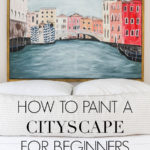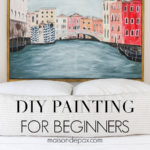
Looking for large canvas wall art? Learn how to create wall decor yourself with this simple tutorial on DIY painting for beginners!
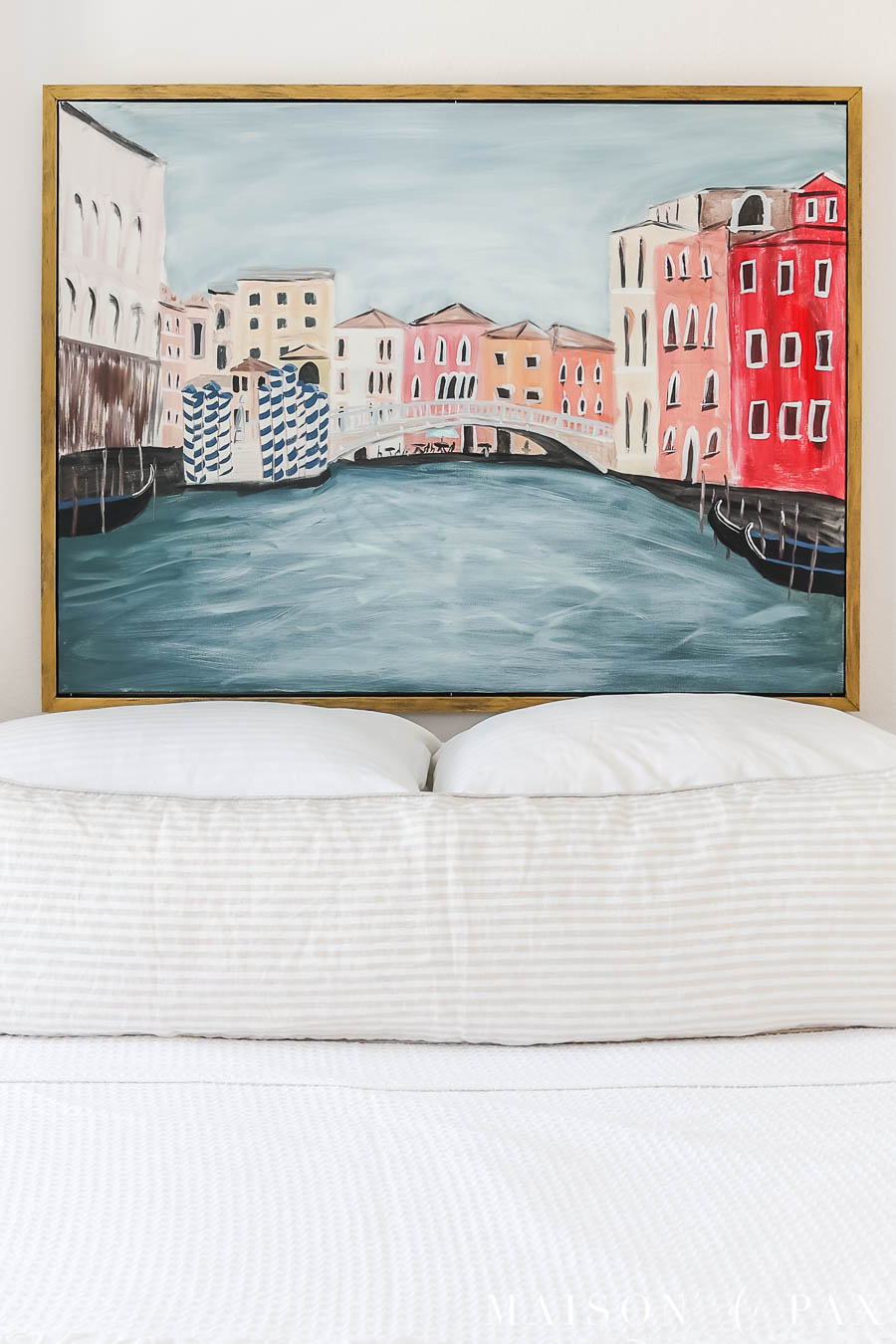
Ever since we finished our DIY murphy bed, I’ve been dreaming of a beautiful, large DIY painting in the blank wall space to act as a kind of headboard.
And it’s finally finished! I couldn’t be more excited about how the artwork turned out, and I’m excited to tell you that you, too, can make a large DIY painting for beginners.
Large DIY Painting
Before the step by step tutorial, let me explain my inspiration. We used to live in France, and I’ve been yearning for a Europe visit lately. While a trip wasn’t in the cards right now, I could pull out my old photographs and remember…

Which brought me to this image (which, for what it’s worth, is for sale on my site along with other photographs for home decor). I decided that a fun, colorful painting of this Venetian scene would be just the thing for our hidden murphy bed wall art in my office/guest room/playroom.
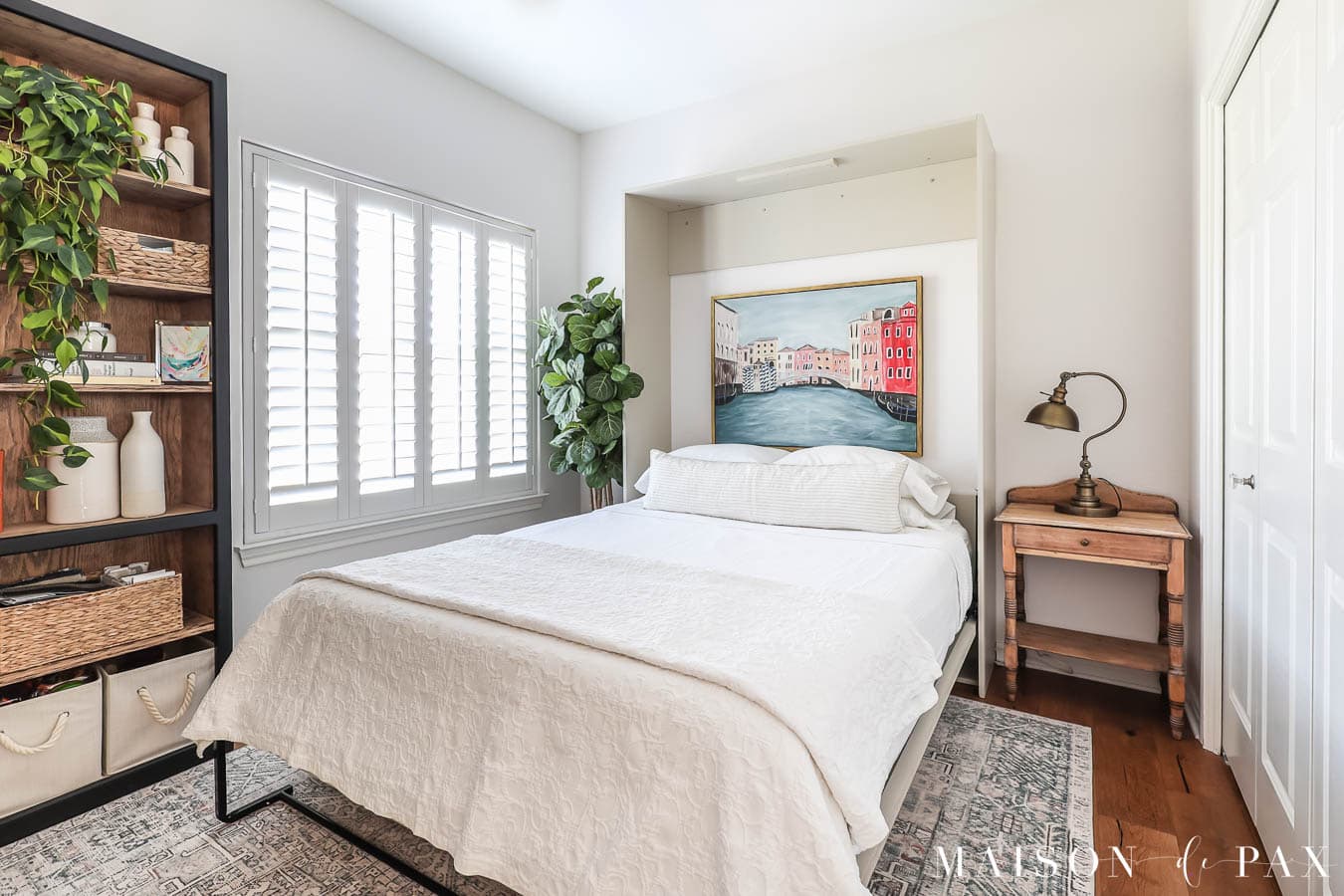
Let me be clear about something: I have ZERO art training. I didn’t even take art in school growing up. But I had an idea, leftover acrylic paints, and some past success in my abstract landscape I painted last year…
Plus my community on Instagram was SO encouraging that it kept me going when I wondered if I should.
Free life lesson: be brave and try new things, even if you feel unprepared! 😉
DIY painting for beginners
I have a video to show you the process of this diy canvas art as well as full written instructions below. I hope you see how you can adapt this large wall art idea to any scene you would like to paint.
Here is what you’ll need:
- large blank canvas (mine is 30×40) stapled to a frame*
- variety of brushes*
- variety of acrylic paints*
- cookie sheet, paper towels, and parchment paper
*see FAQs below for more details
Start by dampening the paper towels and laying them on the cookie sheet. Top with parchment paper and you have a makeshift palette (that helps acrylic paints not dry out too quickly).
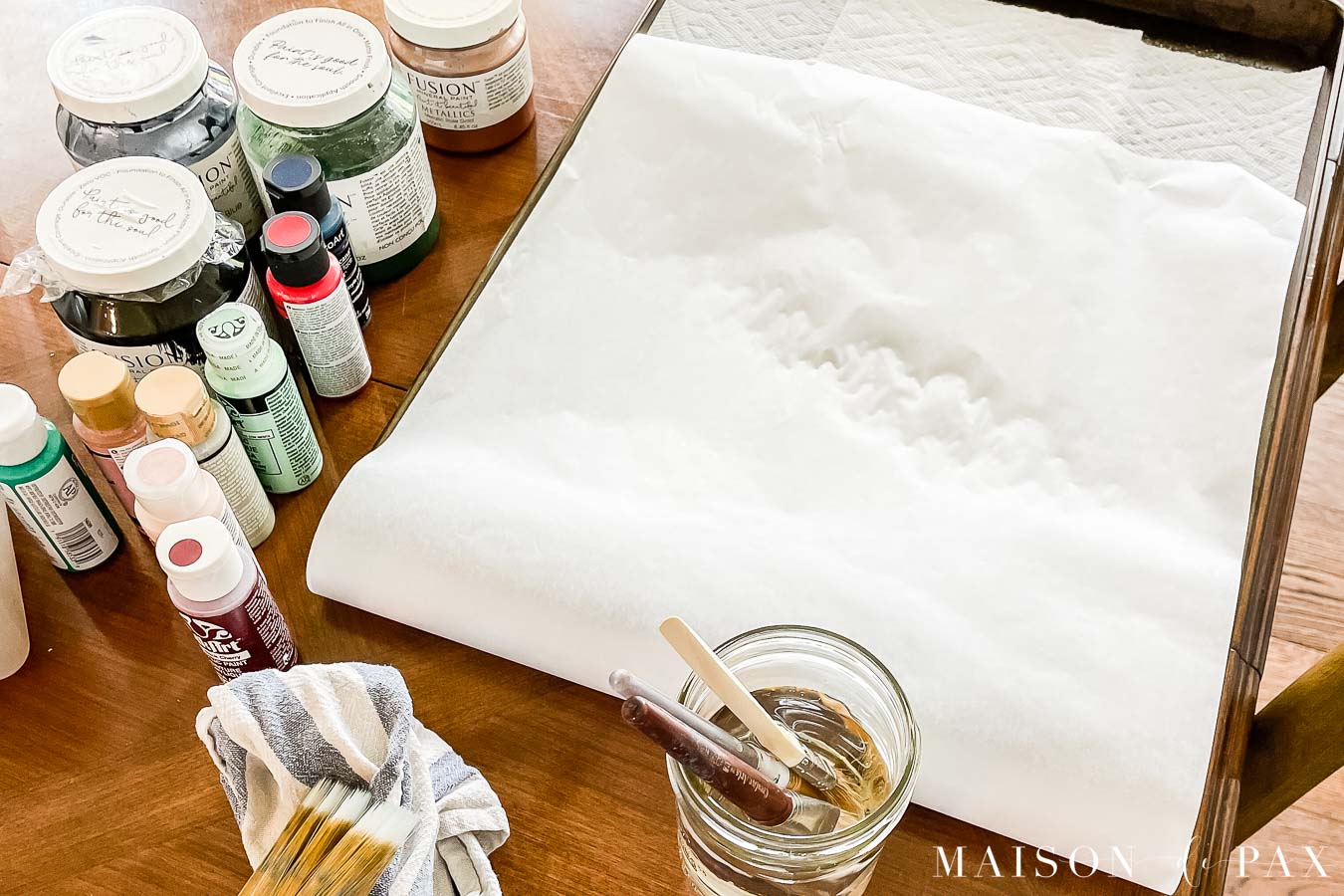
Gather your paints and brushes, and find a well-lit place to prop up your canvas. Now you’re ready to get started.
How do you make a large canvas wall art? I’m not an expert at this, but I wanted to share some instructions and easy paint ideas that worked for me. If I can do it, you can, too!
1. Copy a picture
Maybe some people can imagine scenes and paint them, but since I didn’t want an abstract painting, I needed a visual to replicate. I don’t have any concept of art techniques for perspective (other than what I’ve gathered myself as a photographer), but being able to look at a photograph while I painted helped immensely.
Tip: Look for SHAPES in the scene to help you process how you could replicate it.
For example, my buildings were all made up of rectangles and triangles.
2. Underpaint texture
You always start a canvas painting with gesso, unless (like me) you have a preprimed canvas. The next step, though, is to underpaint, which is basically a painting technique to add texture and depth of color to the canvas before painting your actual scene. I saw this recommended when I was researching for my abstract landscape painting last year and love the result it produces.
It’s simple: just mix a little color of your choice (I used a warm gray) into some white paint, but don’t mix too thoroughly. Then randomly brush the mixture over the canvas. I used my favorite 2′ angled brush to do this. You want a neutral, varied background color.
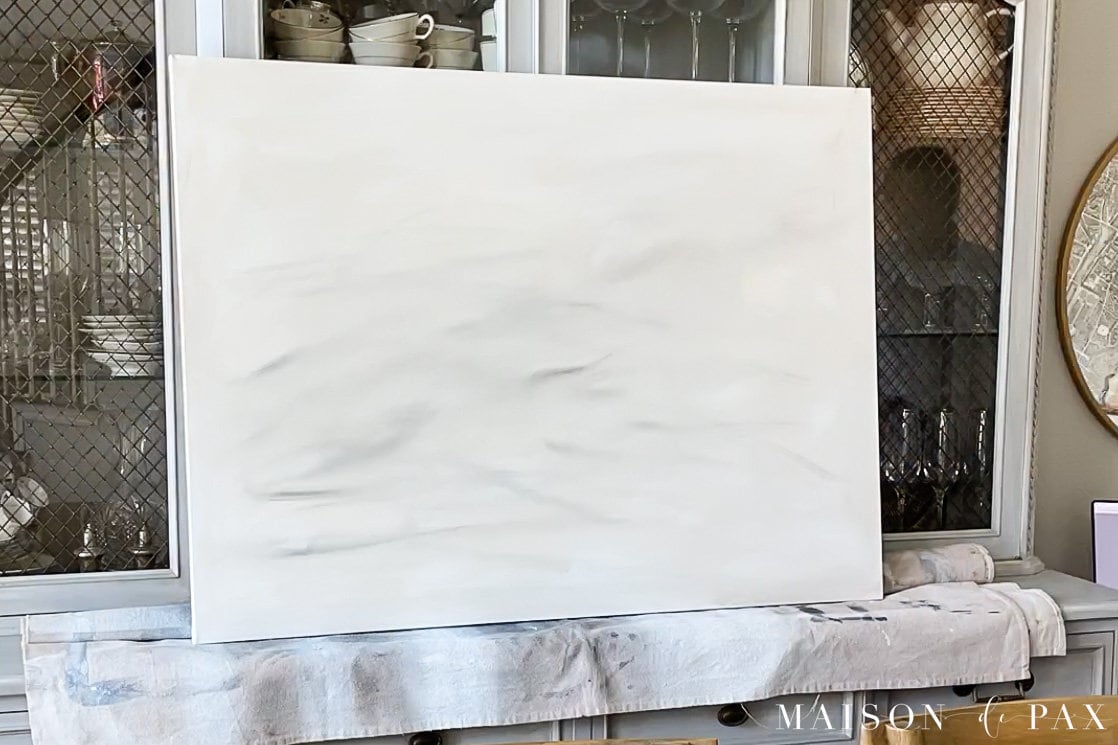
3. Outline in pencil
It will all get covered up with paint anyway, and this gave me a chance to see the main areas of the painting. I did not outline everything, just the skyline, waterline, and building divisions. It’s hard to see from my video because I outlined lightly, but I hope this image helps you see what I mean.
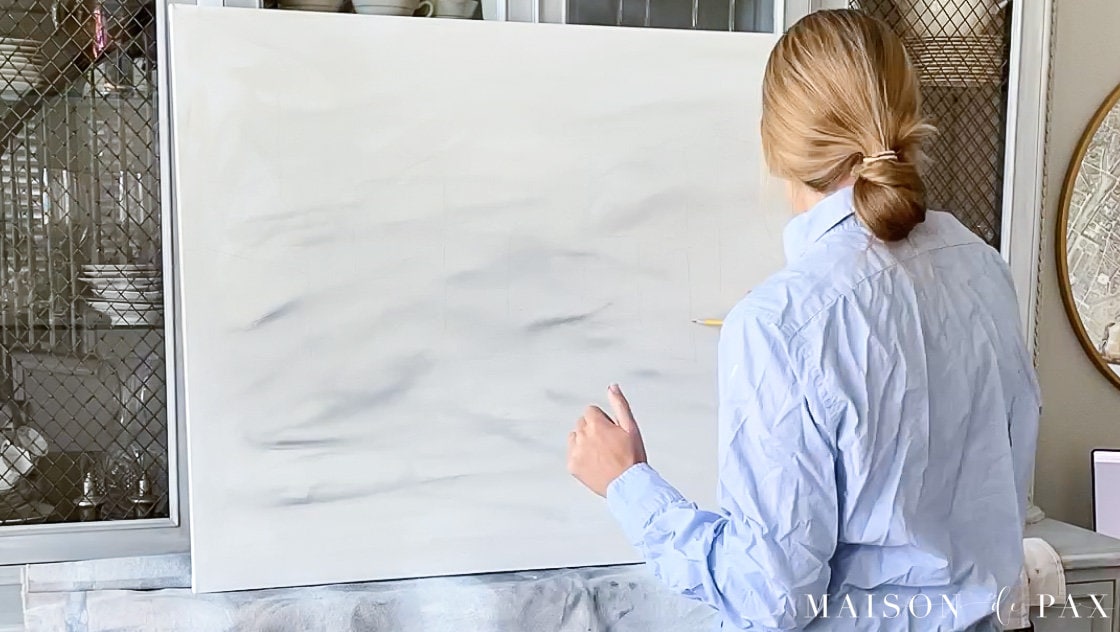
4. Don’t mix your paints completely
This is key, in my humble opinion, to achieving a beautiful painting without any technical art skills. When you mix colors, only mix the paints a little. Let the original colors show in places. For example, I mixed red, pale pink, yellow, and white in various combinations to make the terra cotta colors of the buildings, and I tried to ensure that up close all those colors were still seen in places.
This, like the underpainting, adds depth, texture, and dimension to an otherwise fairly simple painting.
5. Layer, layer, and layer some more
In the same vein, layering the paint and scenes provides the dimension you want. Think of the scene as solid shapes fit together with details added on top.
For example, I painted the buildings entirely as color blocks. Then I added the dark shapes (black mixed with blues and browns… again, avoid truly solid colors!) for the windows and doors. Then when that was dry, I used white (mixed with touches of brown, pink, gray, and more) to create moldings for the windows.
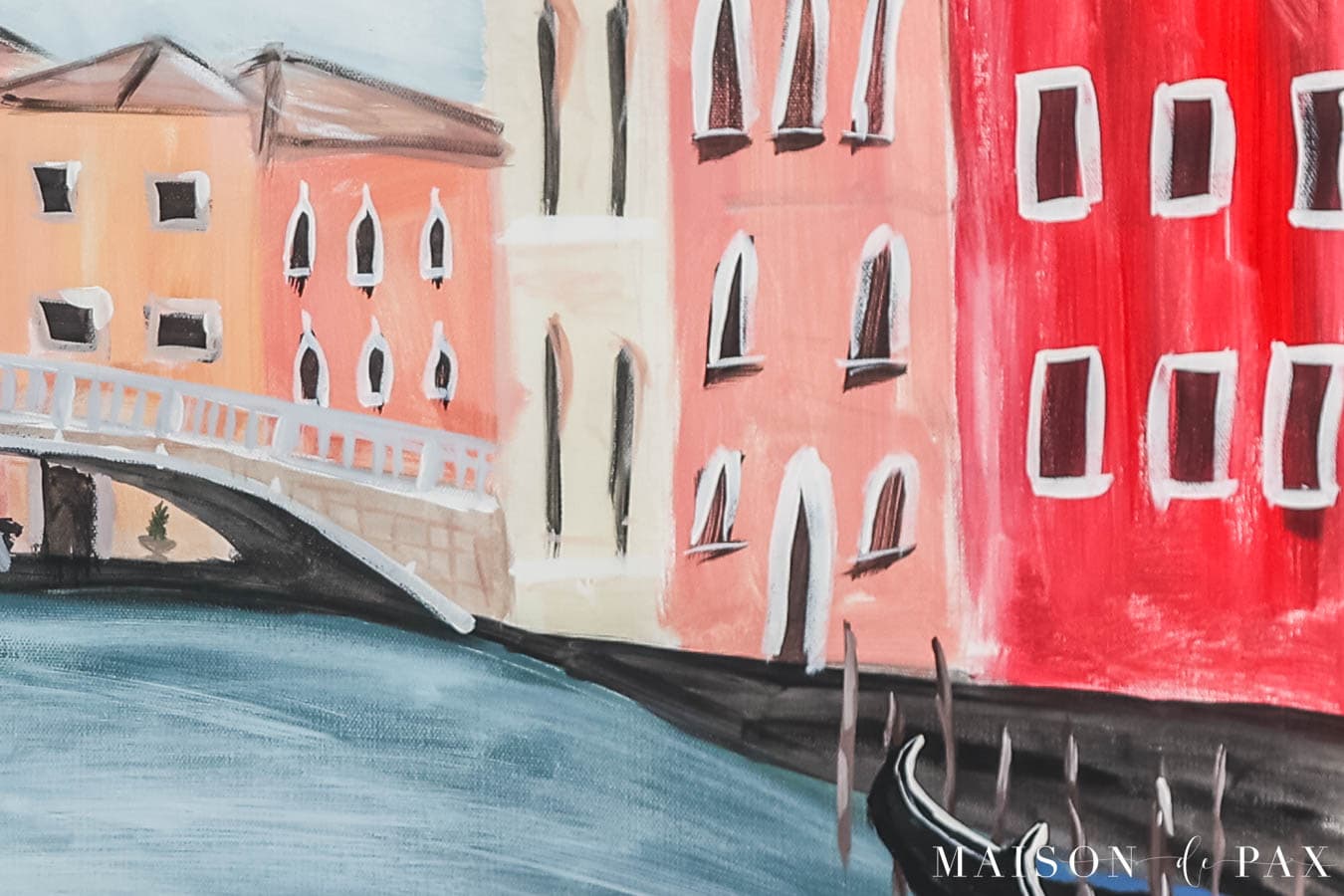
6. Don’t be afraid to add details
Once the textures and depth have been created with mixed colors and layers, add some small details. They can be extremely minimal. I added little stick tables and chairs under the bridge.
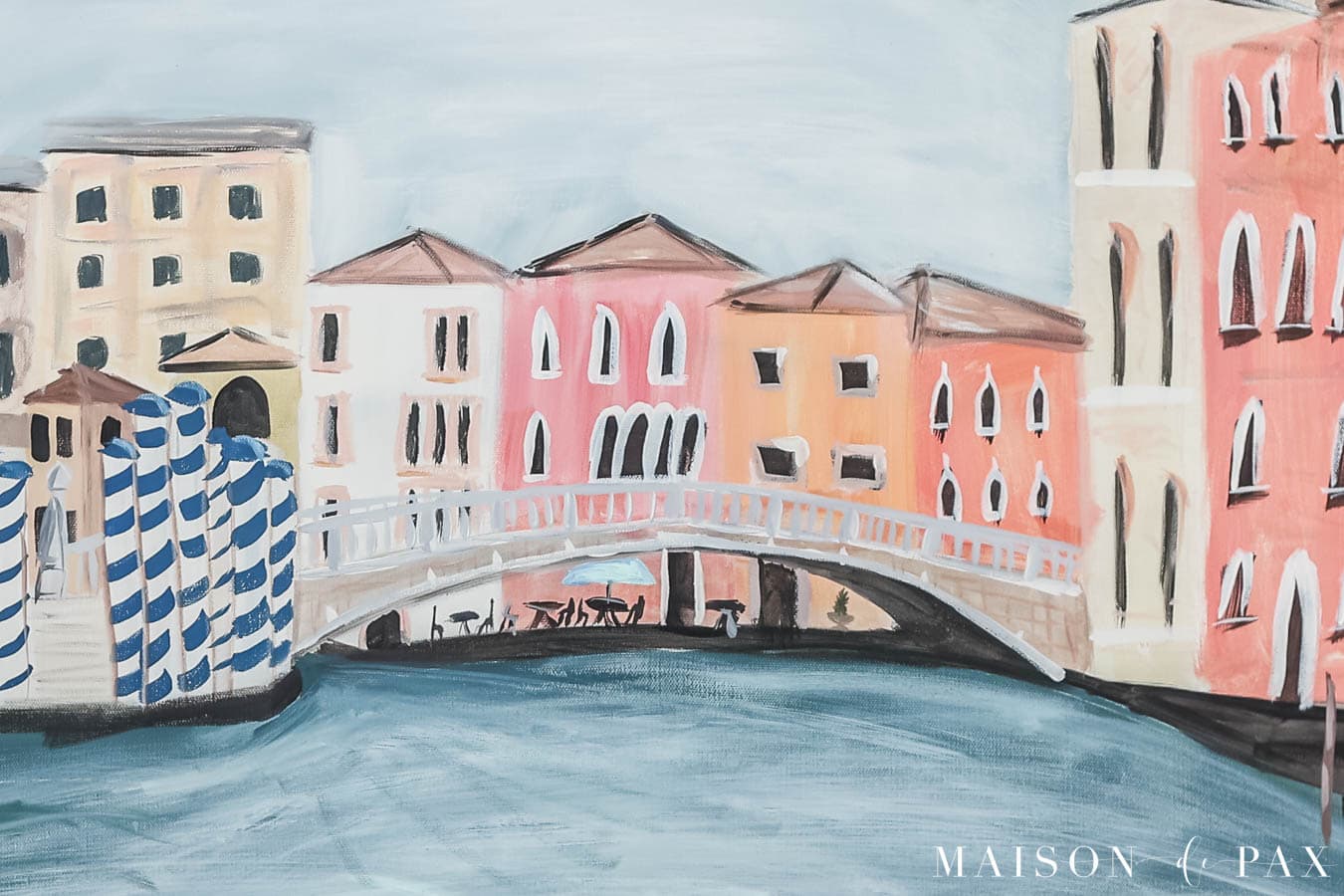
It’s my homage to impressionism. 🙂 Super simple works!
7. Consider the direction of the sun for additional highlights
In the end, I wanted even more dimension, so I imagined the direction of the sunlight and simply added more light accents anywhere I thought the sun would touch. You’d be surprised how a dollop of white paint actually looks good when added in a logical highlight location!
How to frame a large canvas
I actually shared the full tutorial here from a previous diy abstract art project, but here’s a quick summary.
This time I made a frame of 1×2’s with glue and finishing nails that is 1/4″ larger than the width and height dimensions of the painting. I then used 1/8″ spacers while attaching the frame to the painting with finishing nails so that the final result leaves the painting floating in the frame with an 1/8″ gap around it.
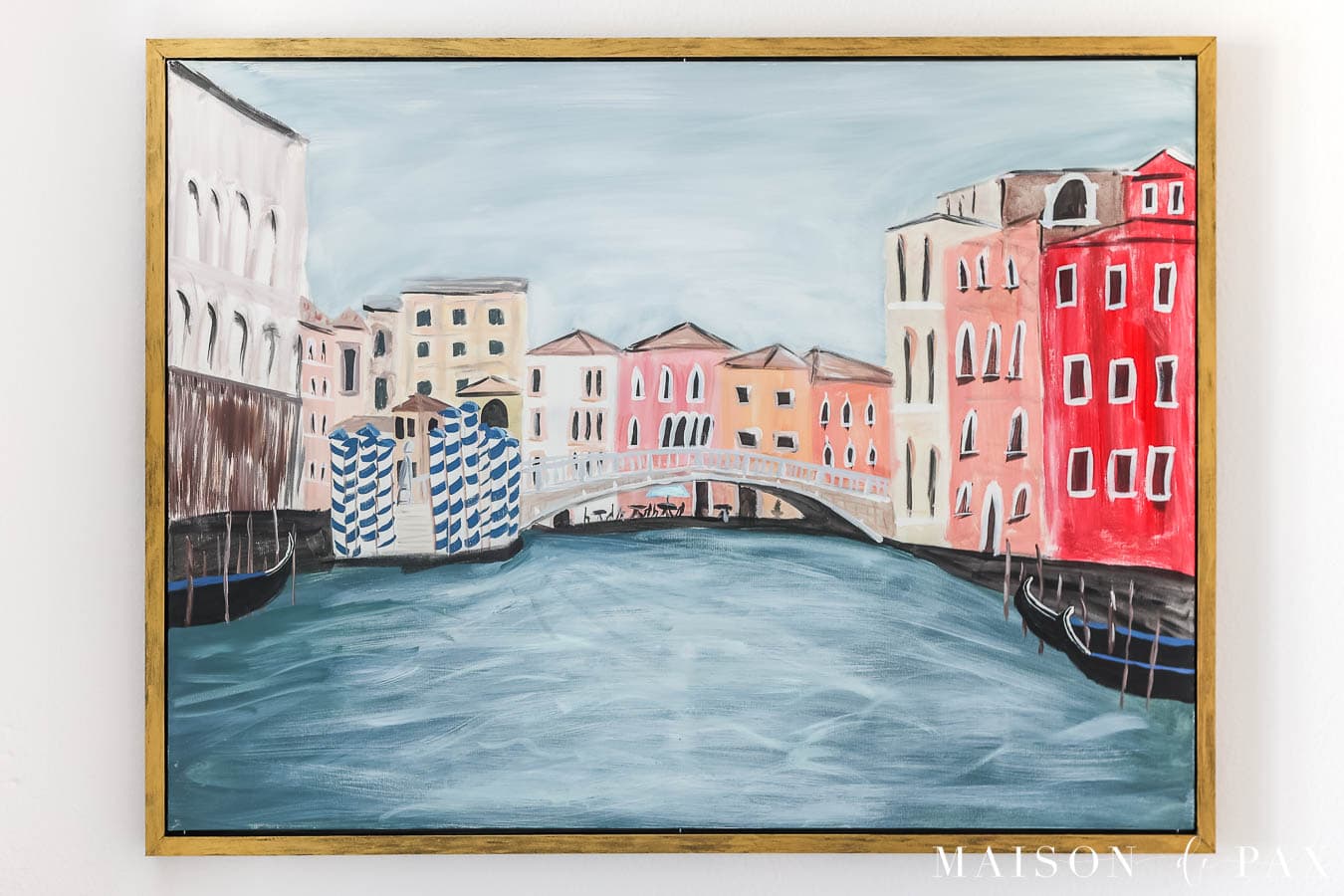
Large Wall Art FAQs
How do you make a big painting at home?
Get an inexpensive canvas and get to work! Seriously, I found the process to be so very therapeutic and would definitely encourage you to give it a try.
What can I use for large paintings?
Canvas: My canvas came from Michaels when their canvas frames were 40% off. You could also look for thrifted canvases and simply paint over something you didn’t love.
Paint: I used mostly acrylic paint colors with one or two chalk paints mixed in… Whatever water-based paint you have on hand will work.
Brushes: I used my favorite trim brush for larger sections and a variety of small craft brushes for the more detailed work. I experimented with different brushes on different buildings to create texture.
More Easy DIY Art Piece Ideas
I hope you enjoyed this diy canvas painting tutorial and that it inspires you to try some large-scale art!
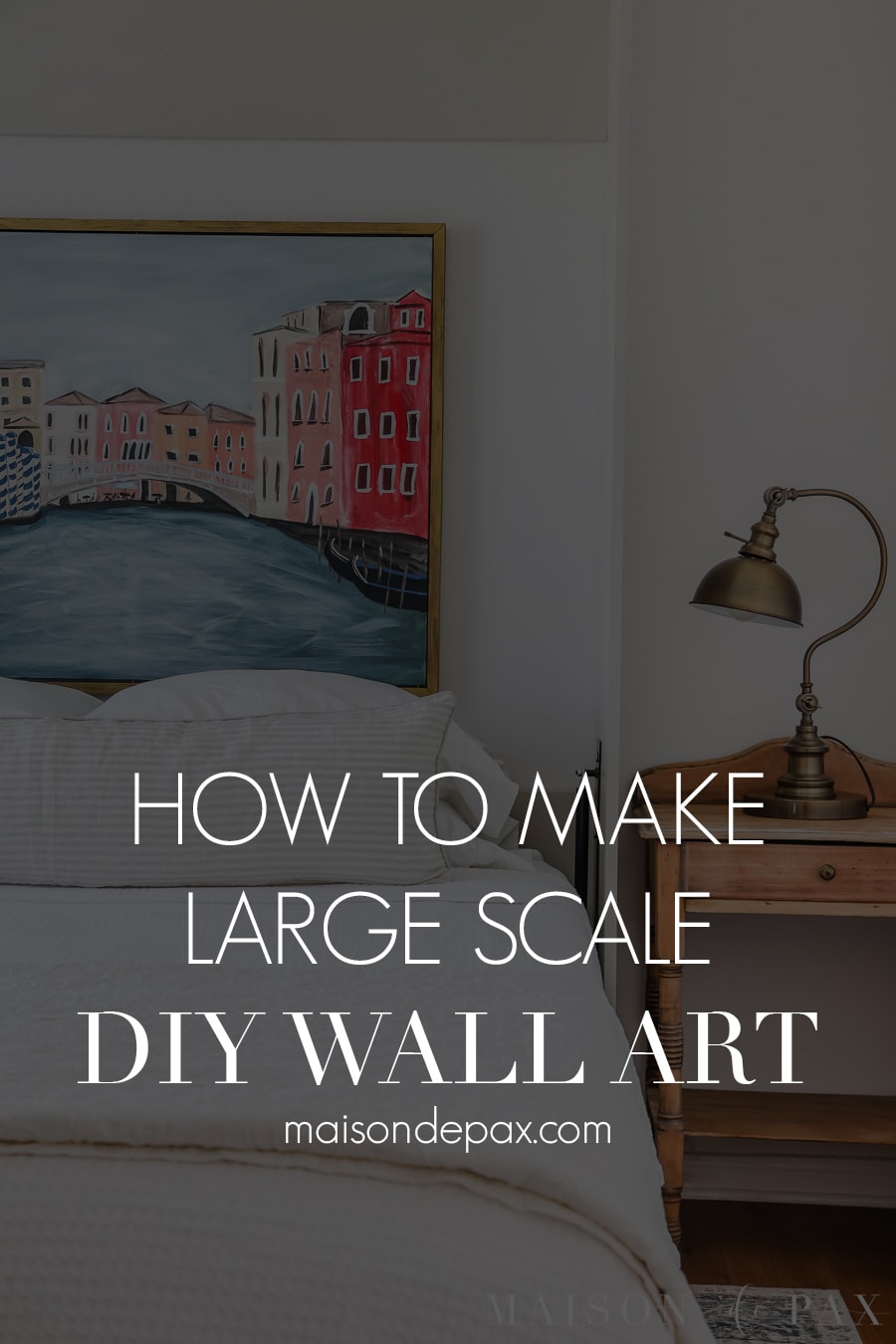
Looking for more diy wall art ideas? You might also love…

